Scrapple, a traditional Pennsylvania Dutch food, is typically made with pork scraps or parts you might otherwise discard, such as trotters, liver, or heart. Some recipes use the head of the animal. This version uses easy-to-find cuts of pork—a combination of pork butt and bone-in pork shanks, hocks, or rib tips. Tender, long-cooked pork is finely chopped in a food processor or meat grinder, and the cornmeal cooks in the savory herbed broth. The pork, cornmeal mixture, and seasonings come together to form a tasty loaf with a sausage-like flavor.
There are several steps and long cooking and chilling times, but preparation is not complicated. You may plan to make the scrapple in one day or divide it up and make it over two days. The cooked shredded pork and broth can be refrigerated in separate containers until the next day.
Cut the chilled loaf into 1/2 to 3/4-inch slices, dust with flour, and fry it up for a tasty breakfast or lunch. It's a delicious protein to serve with eggs, hash browns, pancakes, or baked beans. Add a bit of ketchup or applesauce on the side, or drizzle the scrapple with maple syrup.
“What a tasty, high protein breakfast option! The herbs come through to make a delicious breakfast accompaniment. I cut my loaf into individual portions and froze each to enjoy later. The scrapple slices would make a terrific sandwich meat, too.” —Mary Jo Romano
A Note From Our Recipe Tester
Ingredients
For the Scrapple:
-
3 pounds boneless pork butt, or 5 pounds bone-in pork but
-
2 pounds bone-in pork, such as rib tips, pork hocks, or shanks
-
1 large onion, peeled and quartered
-
1 whole bulb garlic, halved crosswise
-
5 large dried bay leaves
-
1 1/2 tablespoons black peppercorns
-
2 teaspoons fine salt, more to taste
-
12 large fresh sage leaves
-
2 sprigs fresh thyme
-
1/2 teaspoon dried oregano, or marjoram
-
1 cup cornmeal
-
1/2 teaspoon freshly ground black pepper, more to taste
For Serving:
-
2 tablespoons vegetable oil, more as needed
-
1/2 cup all-purpose flour, optional
Steps to Make It
Make Scrapple
-
Gather the ingredients.
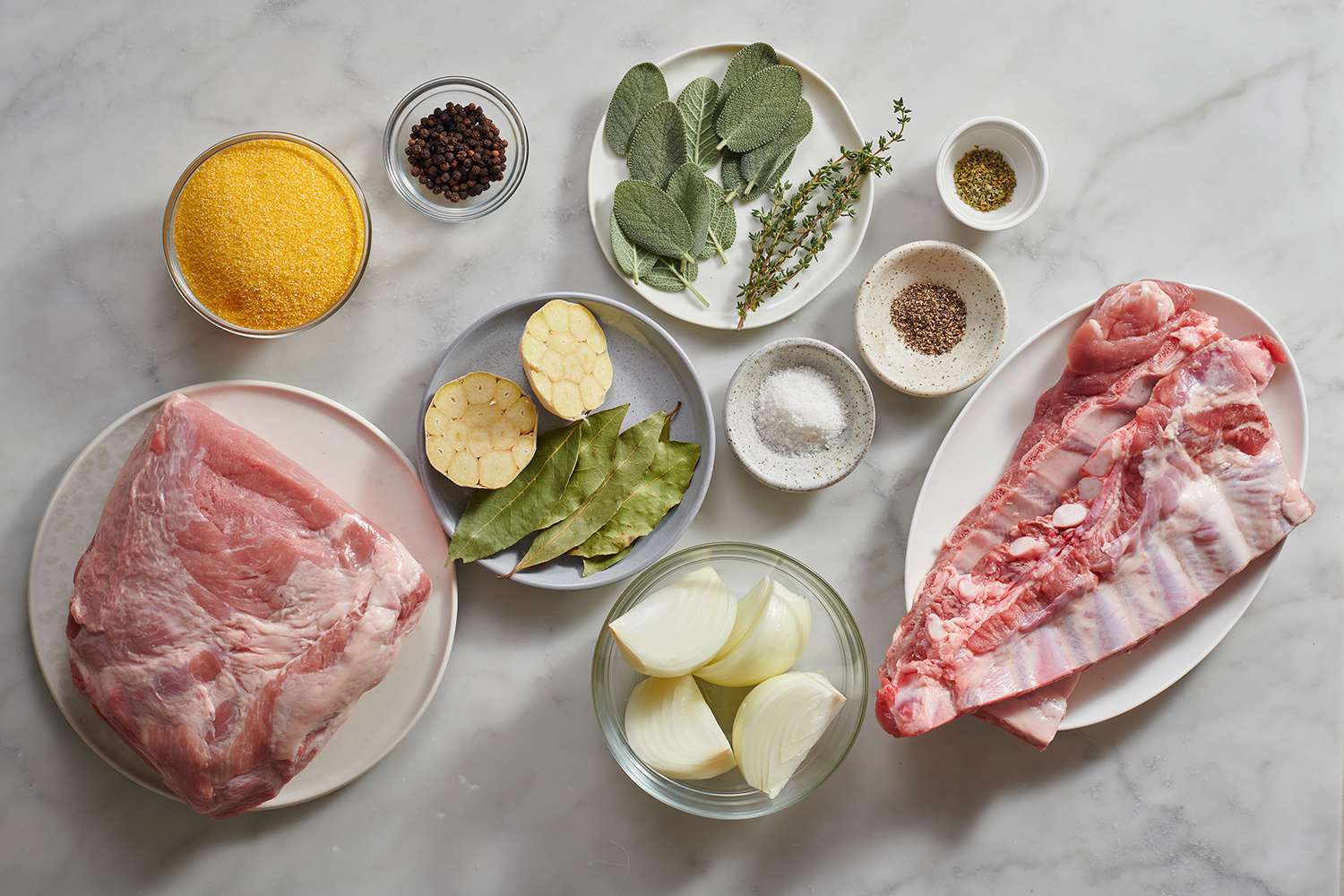
The Spruce Eats/Diana Chistruga
-
In a large stockpot or Dutch oven add the pork, onion, garlic, bay leaves, peppercorns, and salt. Cover with water enough water to submerge the meat. Bring to a boil over high heat. Reduce the heat to low and simmer until the meat is fork-tender, about 3 hours.
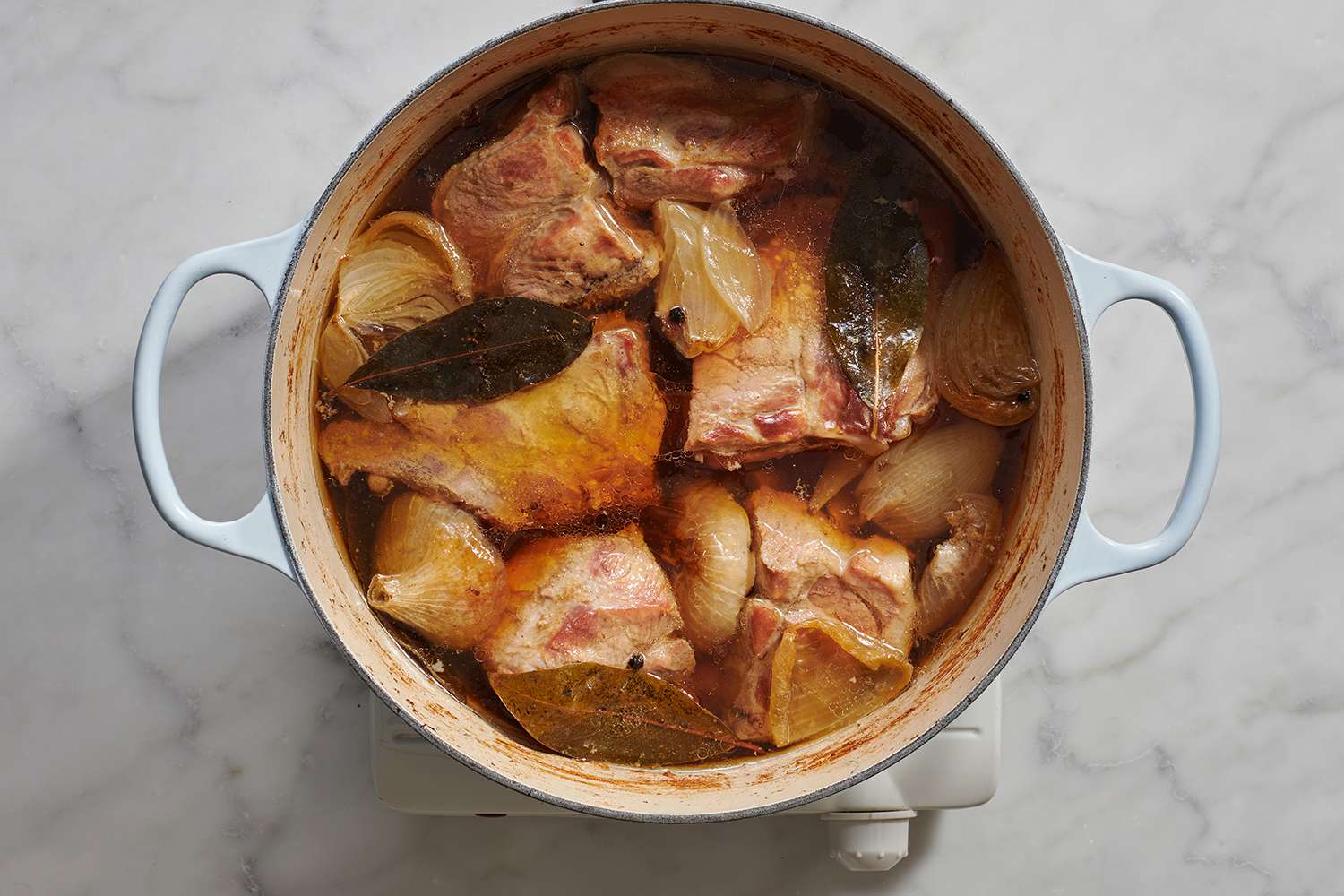
The Spruce Eats/Diana Chistruga
-
With a slotted spoon, remove the pork pieces to a large bowl and set aside.
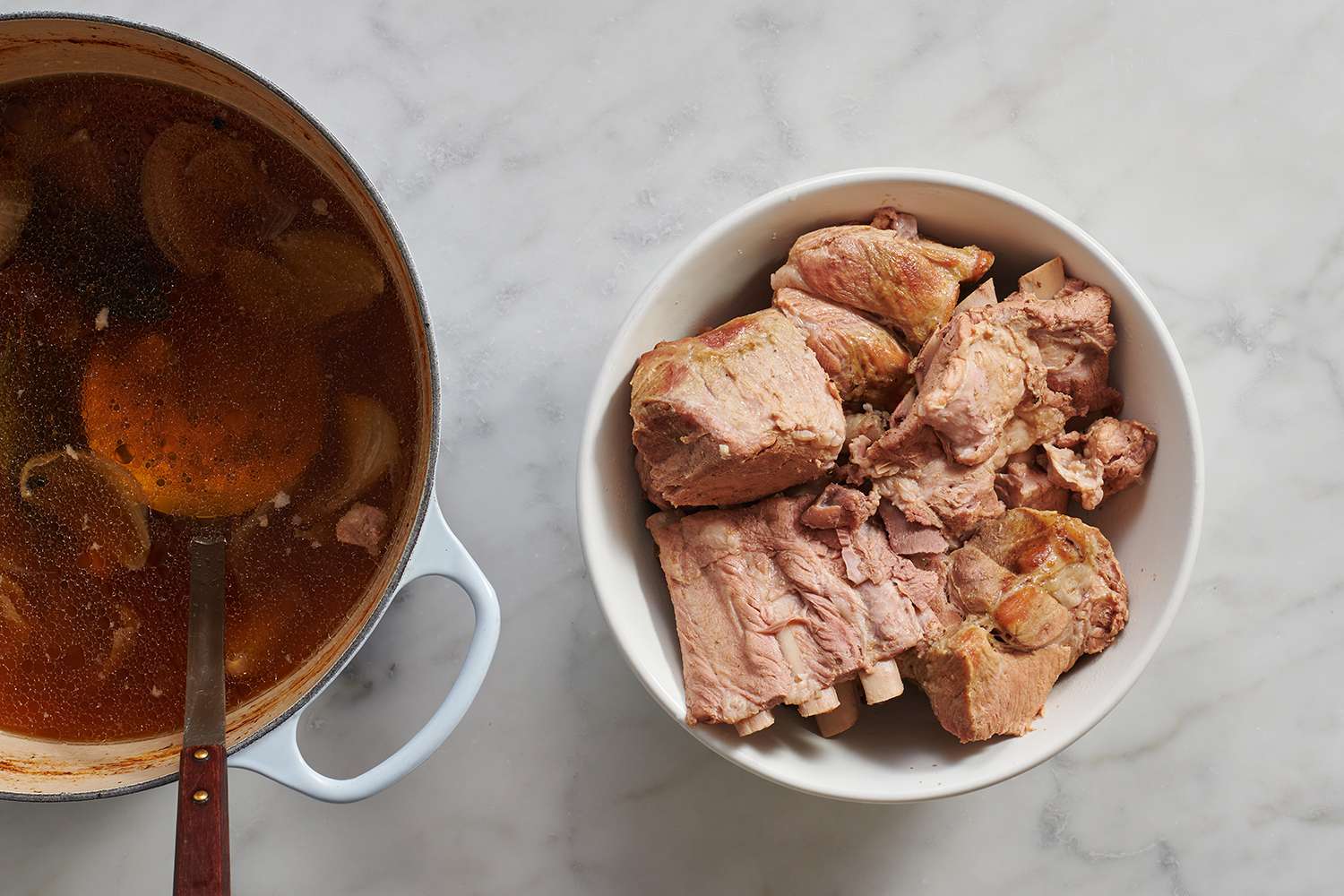
The Spruce Eats/Diana Chistruga
-
Strain the broth through a fine-mesh strainer into a large bowl; discard the solids.

The Spruce Eats/Diana Chistruga
-
When the pork is cool enough to handle, shred it, discarding any bones. At this point, you may refrigerate the meat and broth in separate bowls and finish later or the next day.

The Spruce Eats/Diana Chistruga
-
Add 4 cups of the pork broth to a large saucepan. Add the sage, thyme, and oregano. (If you have leftover broth, put it in a container and refrigerate or freeze it to use in other recipes.) Bring the broth to a boil; reduce the heat to low, and simmer for 5 minutes.
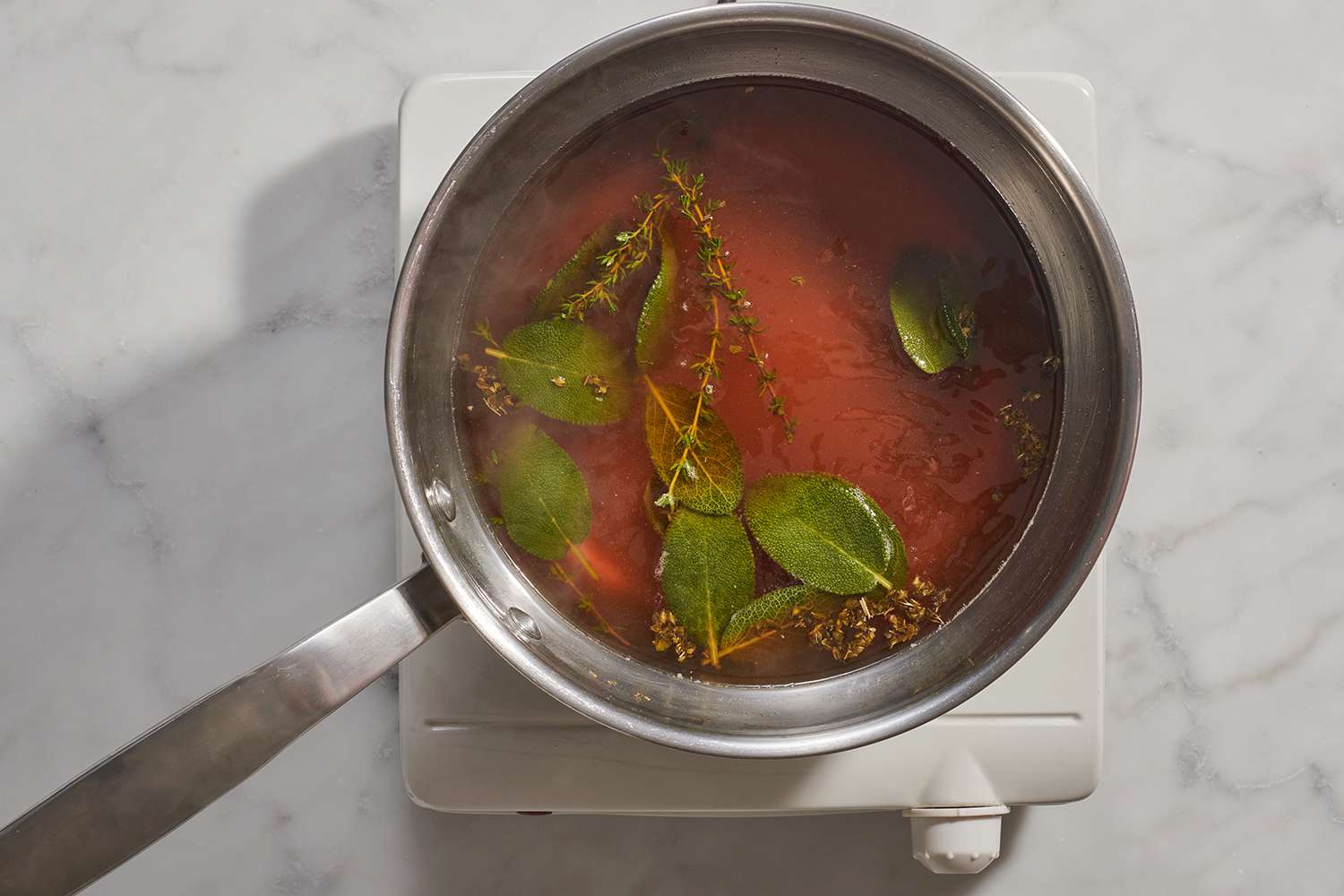
The Spruce Eats/Diana Chistruga
-
With a slotted spoon, remove the sage leaves and thyme to a cutting board. Chop the sage and remove the thyme leaves from the stems; set the herbs aside.
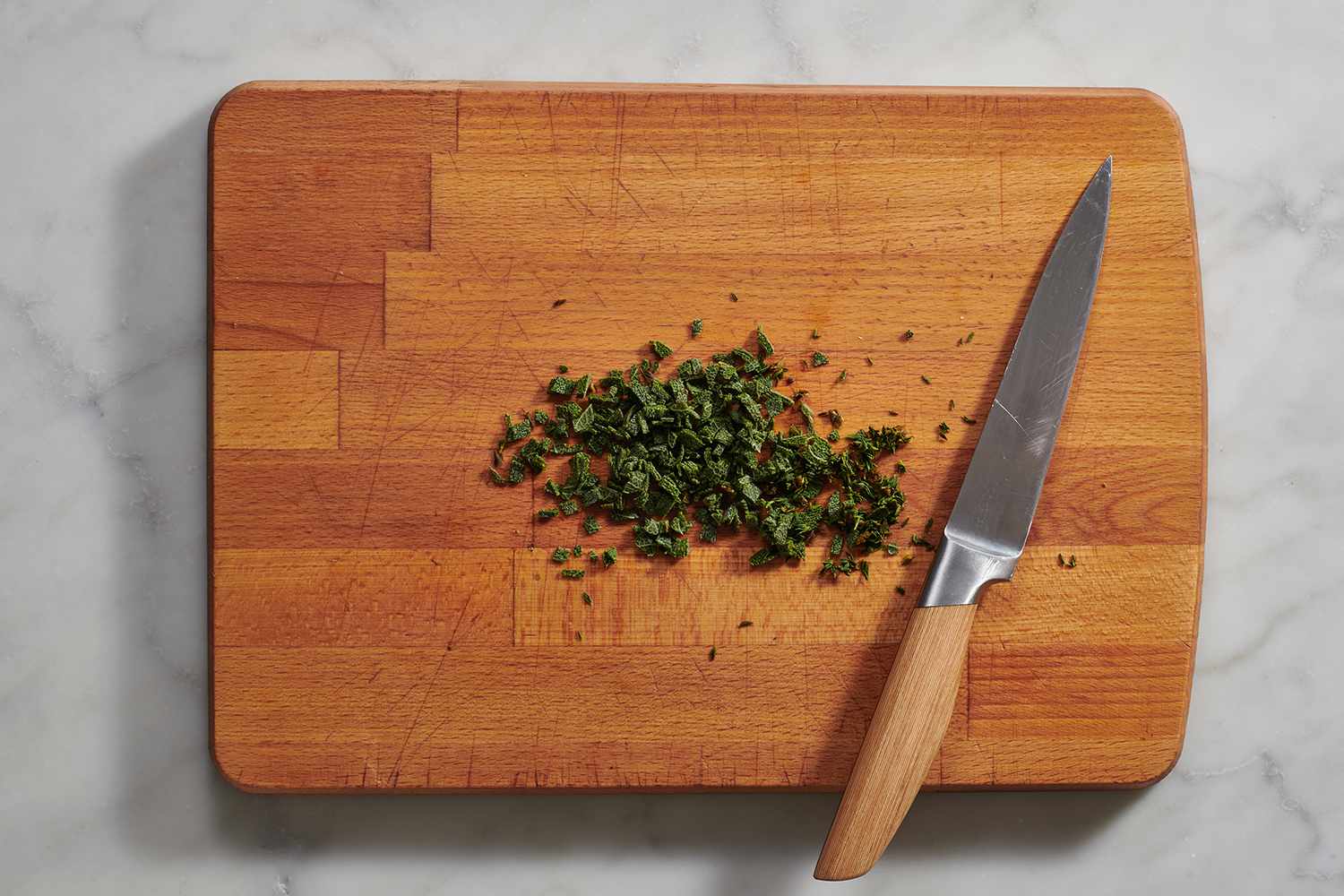
The Spruce Eats/Diana Chistruga
-
Gradually whisk the cornmeal into the simmering broth. Bring the mixture to a boil. Reduce the heat to low and simmer, stirring frequently until thickened, 12 to 15 minutes.
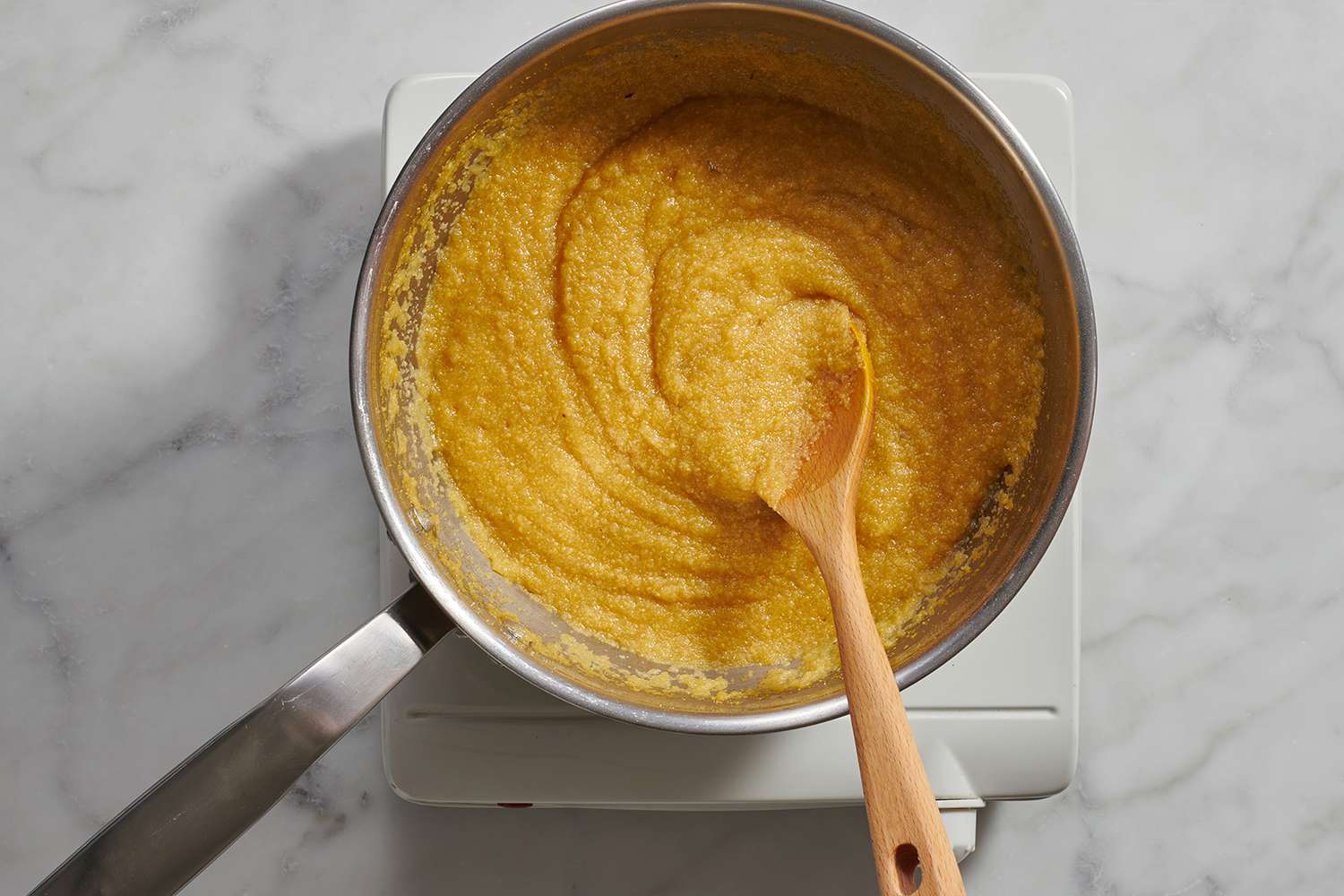
The Spruce Eats/Diana Chistruga
-
Meanwhile, put the shredded pork in a food processor, in batches if necessary, and pulse until finely chopped. Alternatively, put it through a meat grinder fitted with a coarse disc, or chop the pork by hand as finely as possible.
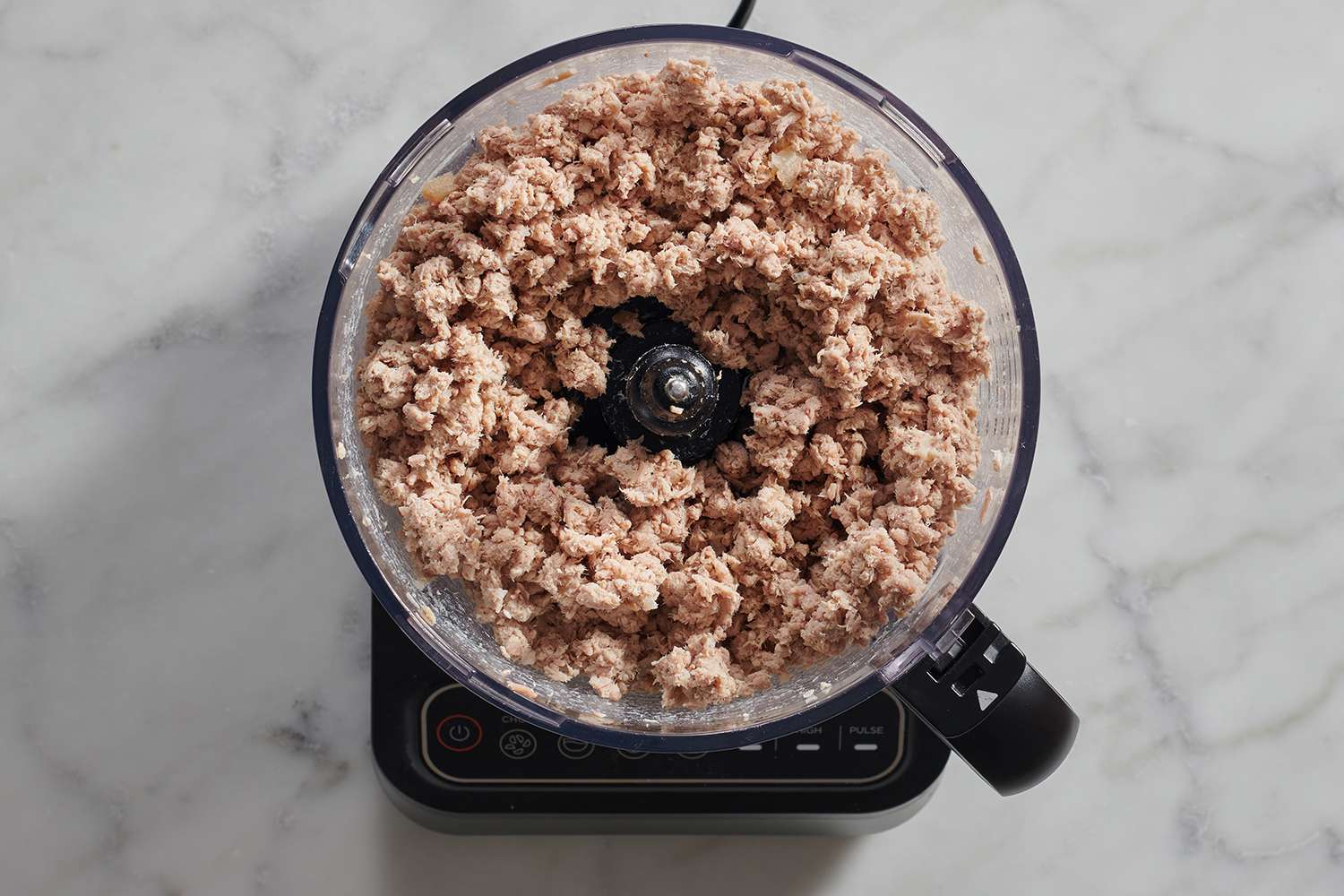
The Spruce Eats/Diana Chistruga
-
Combine the ground pork, cornmeal, reserved herbs, and pepper in a large bowl. Adjust the seasonings to taste with salt and more pepper, if desired.
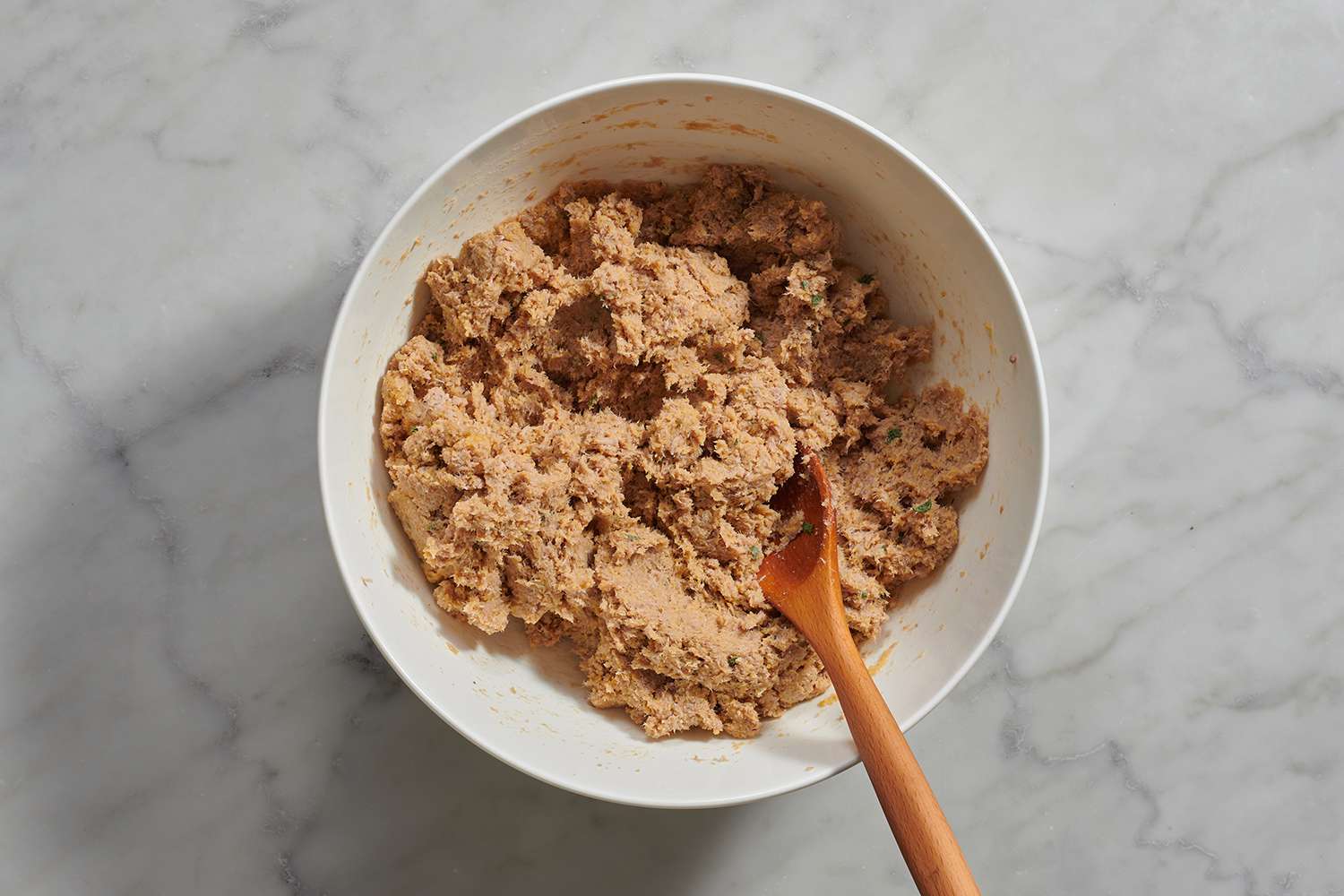
The Spruce Eats/Diana Chistruga
-
Line a 9 x 5-inch or 8 1/2 x 4 1/2-inch loaf pan with parchment paper, leaving some overhang for easy removal later. Spoon the scrapple mixture into the pan, spreading and flattening it to form a loaf. Let cool, then cover and refrigerate until firm, 3 hours or more.
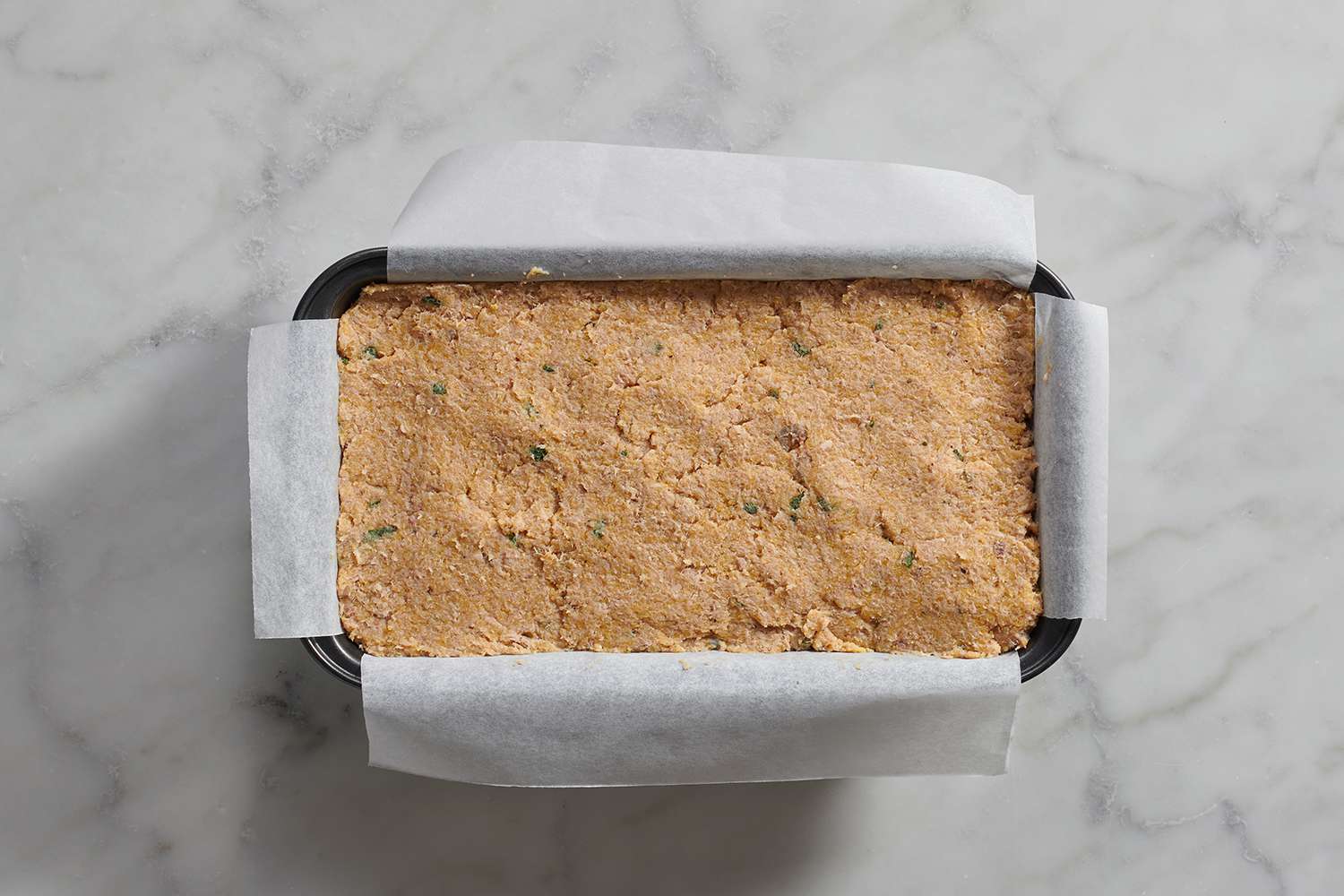
The Spruce Eats/Diana Chistruga
Fry the Scrapple
-
Gather the scrapple and other ingredients.
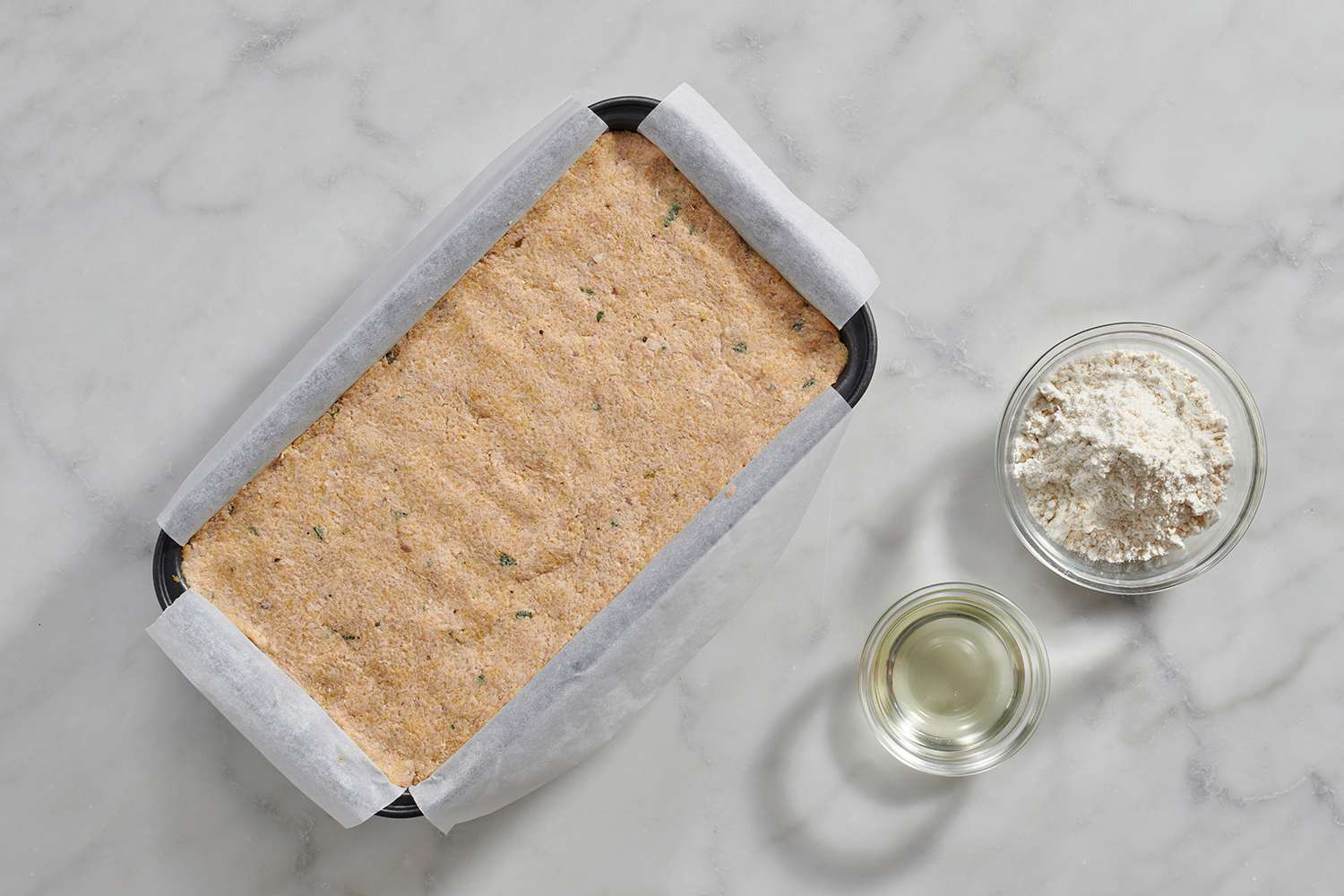
The Spruce Eats/Diana Chistruga
-
Heat 2 tablespoons of oil in a large, heavy-duty skillet.
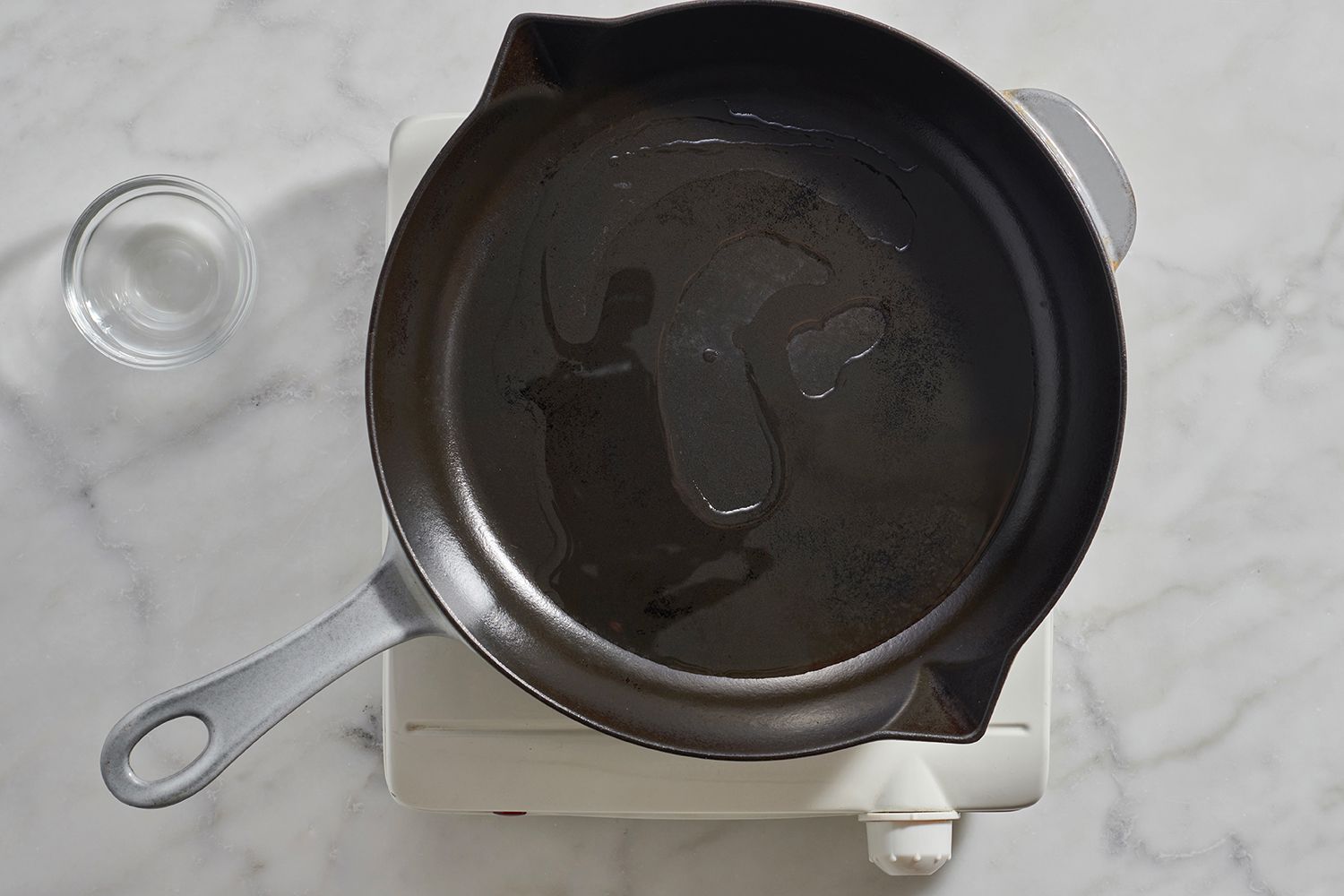
The Spruce Eats/Diana Chistruga
-
Remove the scrapple from the loaf pan by the parchment handles. Discard the parchment. Cut the scrapple into 1/2- to 3/4-inch thick crosswise slices. Dredge the slices in flour, if desired.
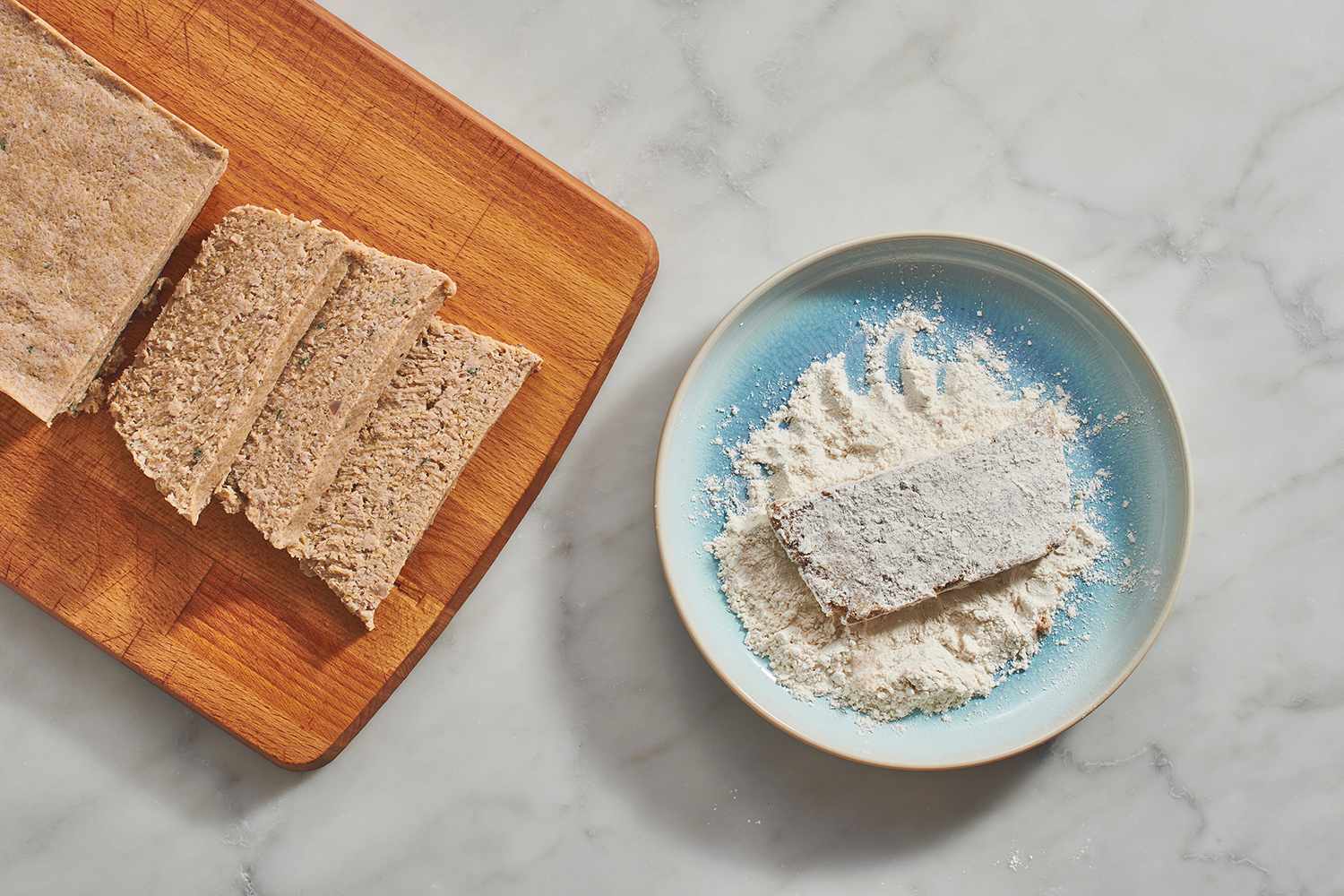
The Spruce Eats/Diana Chistruga
-
Fry the scrapple, in batches if necessary, until crisp and golden brown, 3 to 4 minutes per side. Drain on a paper-towel-lined plate, and serve.
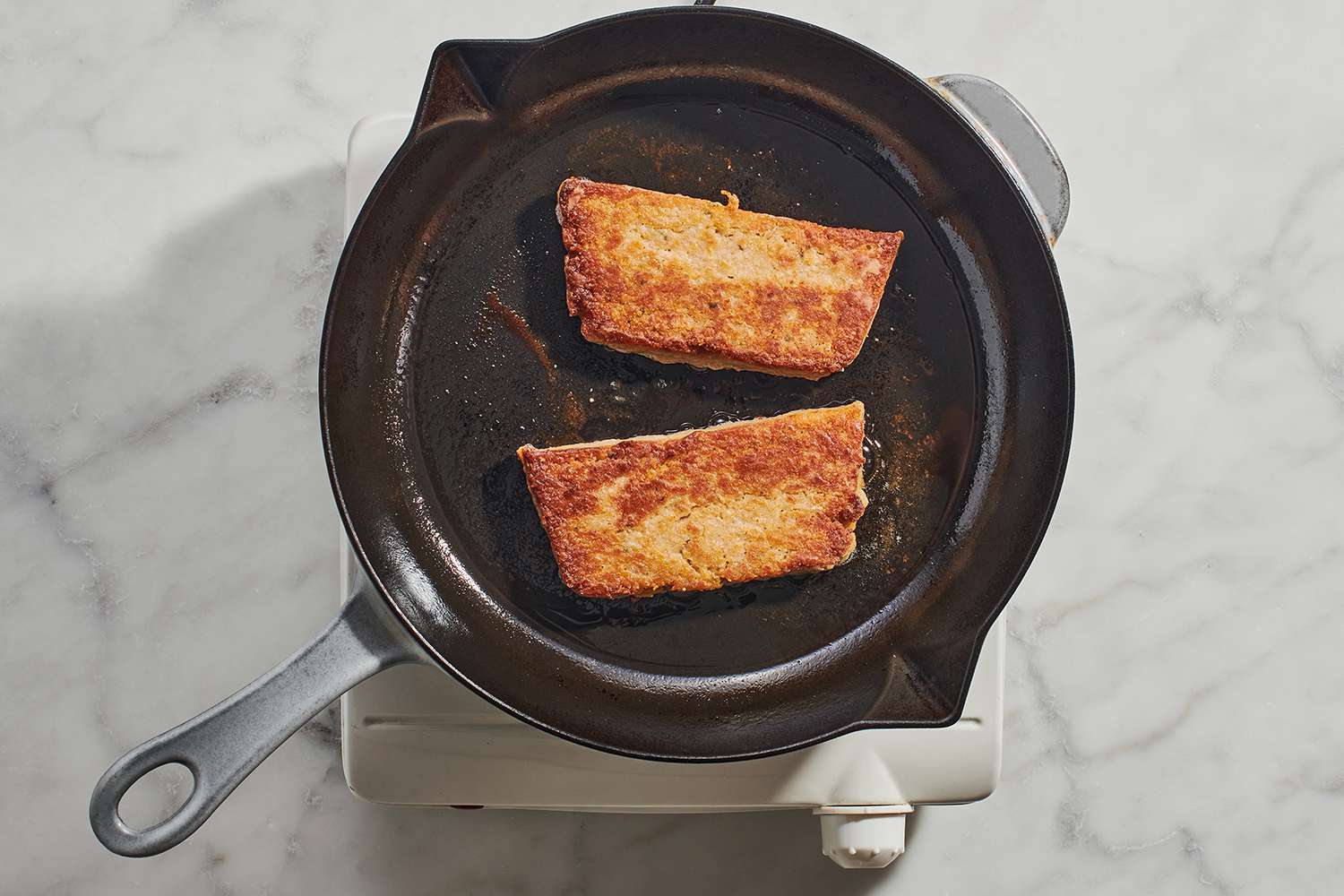
The Spruce Eats/Diana Chistruga
Recipe Variations
- Instead of plain flour, dredge the scrapple in seasoned flour before frying. To 1/2 cup of flour, add 1/4 teaspoon each of garlic powder and onion powder, and 1 dash each of salt and ground black pepper.
- For more sage flavor, add 1 teaspoon of rubbed dried sage to the simmering broth along with the fresh sage, thyme, and oregano.
- Instead of vegetable oil, fry the scrapple in bacon drippings.
How to Store
- Refrigerate the scrapple loaf in a covered container for up to 4 days.
- To freeze, wrap the loaf (or individual slices) in plastic wrap and foil and put it in a resealable freezer bag labeled with the name and date. Freeze scrapple for up to 12 months. To reheat, defrost the scrapple enough to slice and fry as directed, until hot and golden brown.
Can you eat scrapple raw?
Whether homemade or store-bought, scrapple is fully cooked, but it tastes best when it's fried until hot and crispy on the outside.
Is scrapple gluten-free?
This scrapple is gluten-free if you skip the flour coating, but always check the label on the cornmeal to be sure.

